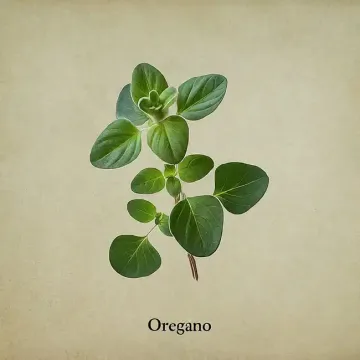Oregano is a versatile and aromatic herb widely appreciated in culinary traditions around the world. It is not only a flavorful addition to various dishes but also offers several health benefits. Below, we'll explore the history of oregano, its health benefits, culinary uses, and some essential tips for growing it successfully in your home garden.
History of Oregano
Oregano (Origanum vulgare) has a rich history that dates back to ancient times. The herb is native to the Mediterranean region and has been used for thousands of years in Greek and Roman cultures. The name "oregano" is derived from the Greek words "oros," meaning mountain, and "ganos," meaning joy, symbolizing the herb as "joy of the mountains." It was often associated with happiness and was used in various rituals and medicinal practices.
Oregano became a staple in European cuisine and was later introduced to the Americas by European settlers. It gained popularity in the United States after World War II, as soldiers returning from Italy brought a taste for Italian cuisine, which prominently features oregano.
Health Benefits of Oregano
Oregano is not only a culinary delight but also a potent medicinal herb. Some of the health benefits include:
- Antioxidant Properties: Oregano is rich in antioxidants, which help protect the body from damage caused by free radicals. These antioxidants, including thymol and carvacrol, contribute to the herb's ability to fight off oxidative stress.
- Anti-Inflammatory Effects: Oregano contains compounds that have anti-inflammatory properties, making it useful in managing conditions like arthritis and other inflammatory disorders.
- Antibacterial and Antifungal: Oregano oil has been found to possess strong antibacterial and antifungal properties, making it effective against a variety of pathogens, including E. coli and Candida.
- Digestive Health: Oregano has been traditionally used to aid digestion and alleviate symptoms of indigestion, bloating, and gas.
- Immune Support: The herb is known to support the immune system and may help in preventing and treating respiratory infections.
Culinary Uses of Oregano
Oregano is a key ingredient in many Mediterranean and Mexican dishes. Its robust flavor enhances a wide range of recipes:
- Italian Cuisine: Oregano is a classic seasoning in Italian cooking, particularly in dishes like pizza, pasta sauces, and grilled meats.
- Mexican Dishes: In Mexican cuisine, oregano is often used in salsas, marinades, and bean dishes, adding a distinctive flavor.
- Herbal Blends: Oregano is commonly used in herbal blends like Italian seasoning and Herbes de Provence, which are essential in seasoning various meats and vegetables.
- Salads and Dressings: Fresh oregano can be used in salads or mixed into salad dressings for an added burst of flavor.
- Soups and Stews: Oregano's strong flavor holds up well in soups, stews, and broths, imparting depth and warmth to the dish.
Growing Tips for Oregano
Oregano is a hardy, perennial herb that is relatively easy to grow, making it an excellent choice for home gardens.
- Location: Oregano thrives in full sun, so choose a spot in your garden that receives at least 6-8 hours of sunlight daily. It can also be grown indoors on a sunny windowsill.
- Soil: The herb prefers well-drained soil with a pH level of 6.5 to 7.0. If your soil is heavy or clay-like, consider adding sand or gravel to improve drainage.
- Watering: Oregano is drought-tolerant and does not require frequent watering. Water the plant when the top inch of soil feels dry, and avoid overwatering, as oregano prefers slightly dry conditions.
- Spacing: Plant oregano 12 to 18 inches apart to allow ample space for the plants to spread. This will also improve air circulation, reducing the risk of fungal diseases.
- Pruning: Regular pruning encourages bushy growth and prevents the plant from becoming too woody. Harvest leaves as needed, and cut the plant back by about one-third in late spring to promote new growth.
- Propagation: Oregano can be easily propagated from cuttings or by dividing established plants. It can also be grown from seeds, although seeds may take longer to germinate.
- Pests and Diseases: Oregano is relatively pest-resistant, but keep an eye out for aphids and spider mites. Good air circulation and well-drained soil will help prevent diseases like root rot and powdery mildew.
- Harvesting: Harvest oregano leaves in the morning when the essential oils are most concentrated. You can use the leaves fresh or dry them for later use.
Growing oregano in your home garden is a rewarding experience. With its rich history, numerous health benefits, and versatile culinary applications, oregano is a must-have herb that will enhance your garden and your cooking.

